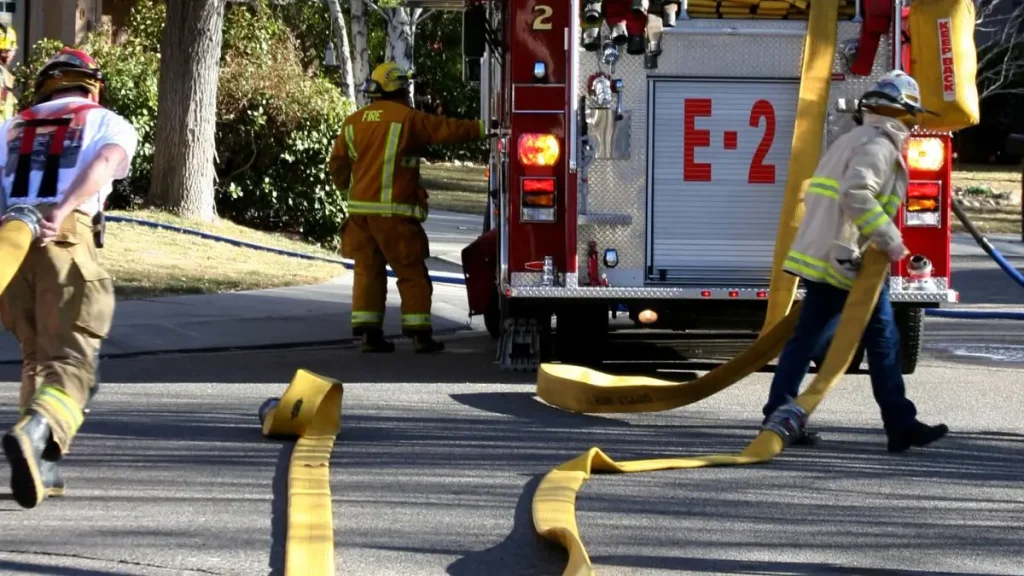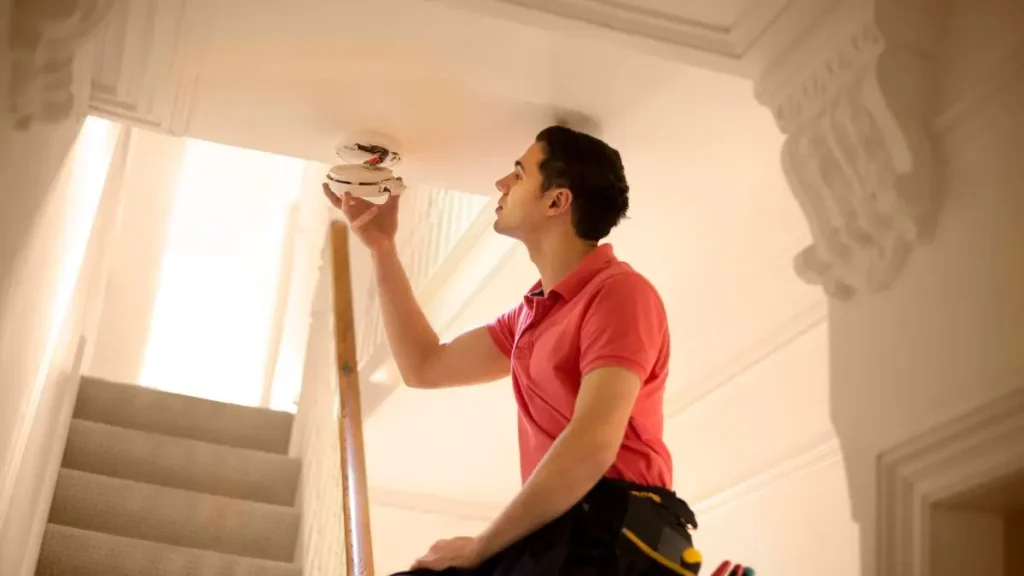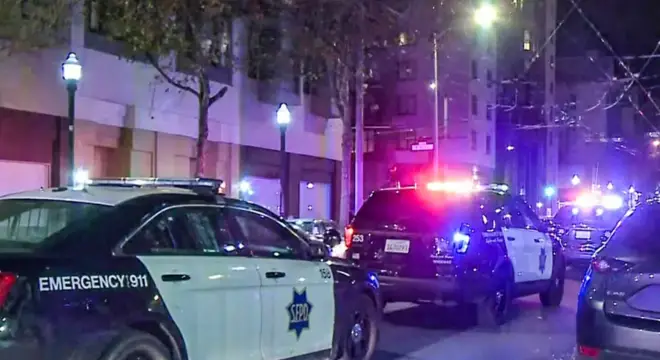New York State Seven Residents Left Without House After Fire
I can’t imagine what it must feel like to suddenly lose your home in a matter of minutes. That’s exactly what happened to a family of seven in Buffalo, New York, this past Sunday evening. Around 7:15 p.m., a fire broke out in their house on Burgard Place—just off Walden and Bailey avenues.
When firefighters arrived, they found flames in the attic of the two-and-a-half-story home. Crews worked fast, and thankfully, they got the fire under control within minutes. But even though the damage didn’t spread far, it was serious enough that the roof had to be cut open—and the family had to leave everything behind.
Right now, four adults and three children are staying somewhere temporary with help from the American Red Cross. No one was physically hurt, but their lives changed overnight. The cause of the fire is still under investigation, and the full extent of the damage hasn’t been released yet.
It’s easy to scroll past news like this. But behind every headline is a real family, suddenly without a home, trying to figure out what comes next.
Have you ever thought about what you’d do if this happened to your family? Let me know in the comments.
How the Fire Started — and What Crews Faced at the Scene

According to a report from WGRZ, the Buffalo Fire Department got the call at 7:15 p.m. on Sunday. Firefighters rushed to the scene on Burgard Place and found flames coming from the attic of the home.
Now, you might think attic fires are easier to contain—but they’re actually more dangerous than they seem. They can spread quickly and trap heat near the roof. Crews had to cut open part of the roof to put the fire out completely. Thankfully, they acted fast, and the situation didn’t spiral out of control.
Still, even though the fire was “under control within minutes,” the damage was enough to displace everyone living there. And at the time of writing this, the cause of the fire is still being investigated.
It makes you think—how quickly things can fall apart, even when help arrives fast.
Earlier, a house fire in Syracuse also left multiple people injured, reminding us how fast things can go wrong—even in the middle of the night.
Who Was Affected — and Where Are They Now?
This wasn’t just a building that caught fire. This was someone’s home.
Seven people were living there—four adults and three kids. That’s an entire household forced to leave everything behind on a Sunday evening. Clothes, furniture, photos, school supplies… all gone or left behind in a matter of minutes.
Right now, they’re staying somewhere safe, thanks to the American Red Cross. But make no mistake—this kind of displacement hits hard. If you’ve ever moved houses by choice, you know how stressful that is. Now imagine doing it with no warning, no plan, and possibly nothing but the clothes on your back.
We don’t have the family’s names, and maybe that’s for the best. But I know from covering stories like this that the road ahead for them won’t be easy—especially with kids involved. This is where community support makes all the difference.
How the Red Cross Responds When You Lose Everything?
Within hours of the fire, the Western New York chapter of the American Red Cross had already stepped in. They posted an update on X, confirming that they were helping the family with emergency housing and basic supplies.
Disaster volunteers Karen & Betsy provided immediate assistance at the scene of two home fires in #Buffalo. They assisted 4 adults and 3 children on Yvetta Dr, and 5 adults and 1 child on Burgard Pl. #EndHomeFires #EmergenciesDontStop pic.twitter.com/MNXFlCXTc6
— AmericanRedCrossWNY (@RedCrossWNY) July 7, 2025
I’ve seen how these Red Cross teams work—they don’t just show up with blankets. They arrange temporary shelter, offer food, give families hygiene kits, and even help them figure out their next steps. It’s not a long-term solution, but in those first 24–48 hours, it can mean everything.
And if you’re wondering whether this is common—it is. The Red Cross says they respond to a disaster every 8 minutes in the U.S., and most of them are home fires just like this one. They also run safety campaigns like “Sound the Alarm,” installing free smoke alarms in high-risk neighborhoods across New York State.
You don’t realize how valuable this kind of help is until you—or someone you love—is the one who needs it.
We regularly share urgent fire safety updates, local emergency alerts, and real recovery stories through our trusted WhatsApp broadcast. If staying informed matters to you, don’t miss it.
Are House Fires Getting Worse in New York State?
This fire isn’t an isolated event. Over the past few months, there have been similar fires across New York—Schenectady, Rochester, even the Bronx. Many of those fires displaced entire families, and a few turned deadly.
If it feels like this is happening more often, you’re not wrong. According to Red Cross and fire safety reports, house fires are still the most common disaster people face in the U.S.—and New York sees its fair share, especially during winter and early spring.
In most cases, the cause is something simple: faulty wiring, unattended cooking, or heating issues. But the pattern is clear—families are losing homes far too often, and not everyone is prepared for it.
That’s why stories like this matter. They’re not just about what happened to one family, but what could happen to any of us.
In another case, a massive overnight fire in South Tulsa caused heavy damage to a residential home, further showing how common these emergencies are.
What You Can Do to Stay Safe?

Reading this might make you wonder—what would you do if this happened to your family?
Here are a few simple, life-saving things you can do tonight:
- Check your smoke alarms. Are they working? Test them monthly.
- Practice a fire escape plan. Everyone in your house should know two ways out of every room.
- Build an emergency go-bag. Add copies of IDs, some cash, basic clothes, medicine, and a charger.
The Red Cross says homes with working smoke alarms are 50% less likely to see a fatal fire. That’s not a small difference. That’s life or death.
And if you feel moved to help this Buffalo family—or others like them—look for verified fundraisers, or consider donating to your local Red Cross chapter. Even better, sign up to volunteer at a fire safety event. A few hours of your time could prevent someone else from going through this.
Just recently, a Fourth of July fire in Clovis destroyed an entire home during celebrations—another reminder that disasters often strike when we least expect them.
What Happens Next for the Family—and What Buffalo Can Learn
Right now, the family is just trying to stay safe, breathe, and figure out their next steps. Temporary help is in place, thanks to the Red Cross—but they’ll likely need long-term housing, school support for the kids, and help rebuilding their lives from scratch.
Situations like this don’t end when the fire’s out. That’s when the real recovery begins—and it often takes weeks, if not months.
This should also be a wake-up call for the Buffalo community. Local leaders, fire departments, and neighbors need to push harder for fire safety awareness. Programs like smoke alarm installations and emergency planning workshops should be more widely shared—especially in older homes and high-risk neighborhoods.
Because the best time to prepare for a house fire… is before it happens.
Final Thoughts
No one ever thinks it’ll happen to them—until it does. One attic fire, a few minutes of flames, and a family of seven suddenly has no home.
If you take one thing from this story, let it be this: check your smoke alarms, talk to your kids about what to do in a fire, and support the people around you who are starting over from nothing. Because one day, it might be your street. Your neighbors. Or even you.
Have you experienced a fire—or helped someone who did? Share your story in the comments. Someone else might need to hear it.
Want to read more real-life fire stories from across the country? Visit our home incidents section for updates, prevention tips, and what others are learning through recovery.
Disclaimer: This article is based on publicly available news reports and official statements as of the time of writing. Details may evolve as the investigation continues. For verified help or donations, always refer to official sources like the American Red Cross.
⭐ Subscribe to Our Newsletter
Subscribe to the publishers newsletter to receive the latest news and updates directly in your inbox


